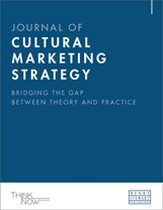Consumer neuroscience: A method for optimising marketing communication
Abstract
Today’s research in cognitive neuroscience suggests that decision making is less deliberate than once thought and instead relies heavily on early emotional responses. Traditional market research methods, such as focus groups and surveys, have been unable to clearly demonstrate consumers’ initial, preconscious reactions. Now, consumer neuroscience methods are revealing insights into the early emotional responses that are crucial to understanding decision making and, therefore, are capturing a more complete view of multicultural consumers. While many methods can be applied to reveal the hidden insights, drivers and motivations of consumers, electroencephalography (EEG) uniquely provides fine temporal resolution of cortical activity in a scalable fashion, making it an ideal resource for the analysis of marketing material. Using EEG, researchers are able to evaluate the attentional effort, emotional engagement and memory activations in response to stimuli on a secondby- second basis, enabling optimisation of marketing communications at a highly granular level. These metrics have been tested for reproducibility and validated with in-market performance, ensuring applicability to consumer behaviour and providing unique insights about consumer groups that have historically been difficult to capture.
The full article is available to subscribers to the journal.
Author's Biography
Julia Trabulsi is the global production support manager for Nielsen’s consumer neuroscience group. Previously, Julia worked as a global neurophysiologist for Nielsen, setting up pop-up labs and conducting consumer neuroscience research around the world for several multinational, Fortune 500 clients. Currently, Julia manages support for all Nielsen NeuroLabs globally, ensuring the operation of electroencephalogram (EEG) and eye-tracking equipment in 15 labs worldwide. In addition, she works closely with an engineering team on the development, deployment and support of Nielsen’s dry, wireless EEG headset set for global launch in 2015, which she has presented at numerous events and conferences. Julia studied philosophy-neuroscience-psychology at Washington University in St Louis, and worked in labs researching sensation, perception and cognitive control prior to joining Nielsen’s consumer neuroscience team.
Manuel Garcia-Garcia is a neuroscience director at Nielsen. He works with an integrated research team to ensure the scientific integrity of the company’s project pipeline and also leads the academic relations of Nielsen Neuro with top business schools globally. Dr Garcia-Garcia is also an adjunct professor of consumer neuroscience in the graduate school of New York University Stern School of Business as well as in IE Business School. He develops and delivers the curriculum of one of the first courses of its kind in a business school. He is also working on a textbook in the field of consumer neuroscience, to be published by MIT Press. Dr Manuel Garcia-Garcia received his PhD in neuroscience from the University of Barcelona, where he received the prestigious Extraordinary Doctorate Award.
Michael E. Smith is a cognitive neuroscientist and business professional whose career has spanned the academic, government and corporate sectors. Michael has consulted with dozens of large corporations on strategies for leveraging neuroscience to improve consumer engagement with advertising, branding, product development and packaging. Currently Vice President, Consumer Neuroscience Solutions at Nielsen, Michael serves as a liaison to marketing industry associations and coordinates pro bono work with nonprofits while facilitating broader adoption of neuroscience methods to improve consumer insights. Michael earned a PhD from the Psychology Department of UCLA, and an MBA from the Haas School of Business at UC Berkeley.
